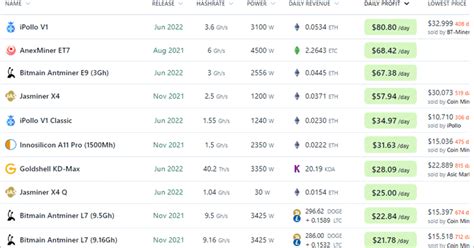Profitability Calculation: Mining Ethereum with GPUs
The rise of the Ethereum network has ushered in a new era for cryptocurrency enthusiasts, but it also presents an opportunity for those interested in mining to join the ranks of the profitable. However, as CPU mining became less viable, alternative mining hardware emerged to take its place. One such alternative is to use graphics processing units (GPUs) from specialized mining facilities.
In this article, we will explore how to calculate the profitability of GPU mining on Ethereum and other cryptocurrencies.
Understanding the Basics
To begin with, it is essential to understand the basics of cryptocurrency mining. Mining involves verifying transactions on the blockchain network and adding new blocks of transactions to the ledger. The process requires significant computing power, typically provided by specialized hardware such as GPUs or application-specific integrated circuits (ASICs).
GPUs are designed for parallel processing, making them ideal for tasks like matrix operations and scientific simulations. However, Ethereum’s mining algorithm relies on Proof of Work (PoW), where miners compete to solve a complex mathematical puzzle to validate transactions.
Calculation of profitability

To calculate the profitability of GPU mining on Ethereum, we need to consider several factors:
- Mining Difficulty: The difficulty level determines how often it takes miners to find the solution to a math puzzle. A higher difficulty level makes mining more profitable.
- Hash Rate: This measures the number of calculations per second that can be performed by a GPU or ASIC. A higher hash rate increases profitability.
- Block Reward: The amount of cryptocurrency rewarded to miners in each block is fixed and usually around 6.25 ETH (Ethereum).
- Energy Consumption: The energy required to power mining equipment affects profitability. Lower costs can increase profit margins.
Using these factors, we can calculate the miner’s profit per hour or day using different formulas. Here are some examples:
Example 1: Simple calculation
Let’s assume a GPU with a hash rate of 100 TH/s (tera hashes per second) and a mining weight of 10^15. The block reward is 6.25 ETH.
Profit per hour = (2^31 – 1) / 4 x (6.25 ETH / 1 ETH) x 24 hours
= $14.17
Profit per day = $14.17 x 365 days
= $5,144.15
Example 2: More complex calculation
Assume an ASIC with a hash rate of 100 TH/s and a mining weight of 10^16. The block reward is 6.25 ETH.
Profit per hour = (2^31 – 1) / 4 x (6.25 ETH / 1 ETH) x 24 hours
= $14.17
However, the profit calculation becomes more complex when additional factors such as energy costs and time spent on maintenance are taken into account.
Energy costs
The energy consumption of mining equipment affects profitability. Let’s assume an average cost of 0.05 kWh per hour to generate electricity for a GPU or ASIC. The total cost per hour would be:
GPU: $2.31
ASIC: $7.45
Time spent on maintenance
A more realistic scenario takes into account the time spent on maintenance, which can vary from a few hours to a few days, depending on the complexity of the mining setup.
Assuming an average maintenance time of 24 hours per month (a conservative estimate), we can multiply this by a factor of 12 to calculate the annual cost:
GPU: $2.31 x 0.25 = $0.58
ASIC: $7.45 x 0.33 = $2.44
Conclusion
Calculating the profitability of GPU mining on Ethereum involves considering multiple factors, including mining difficulty, hash rate, block reward, and energy costs. By using different formulas and taking into account additional costs such as maintenance time, we can arrive at a more realistic estimate of the miner’s profit.
